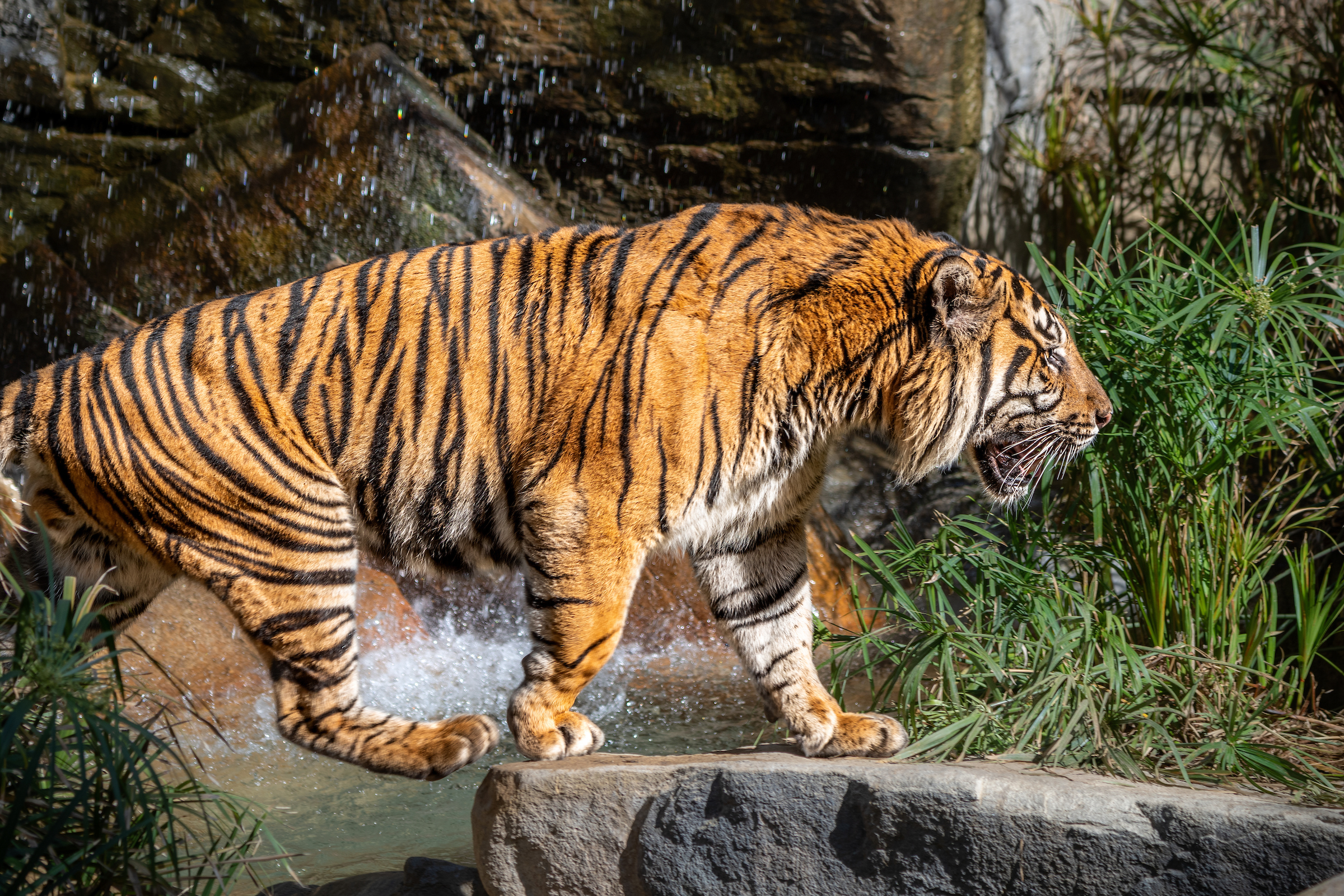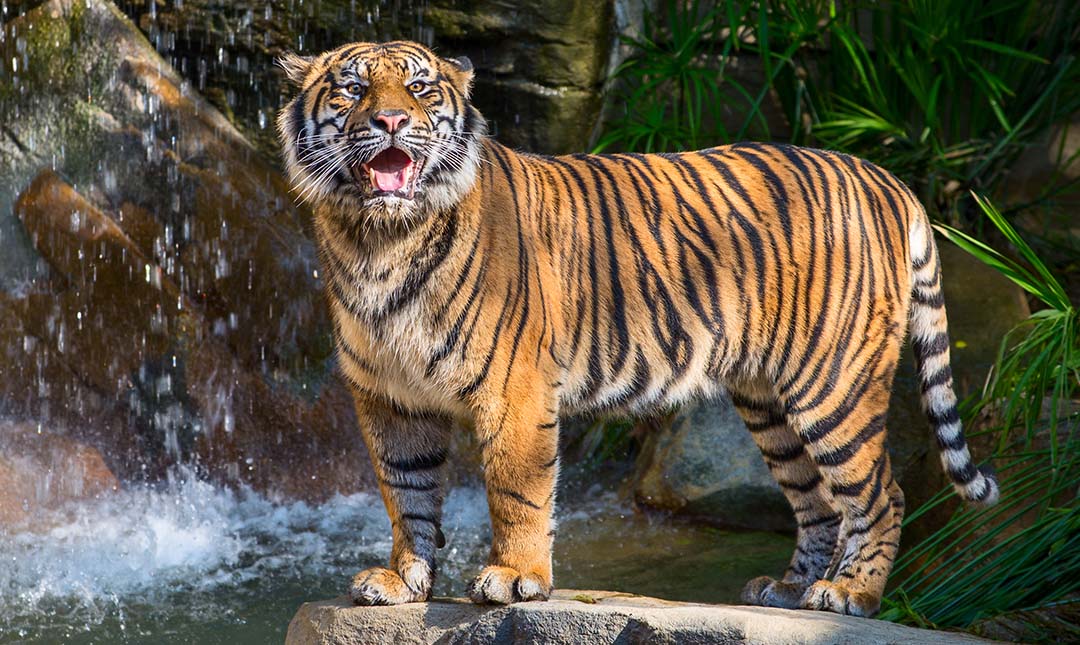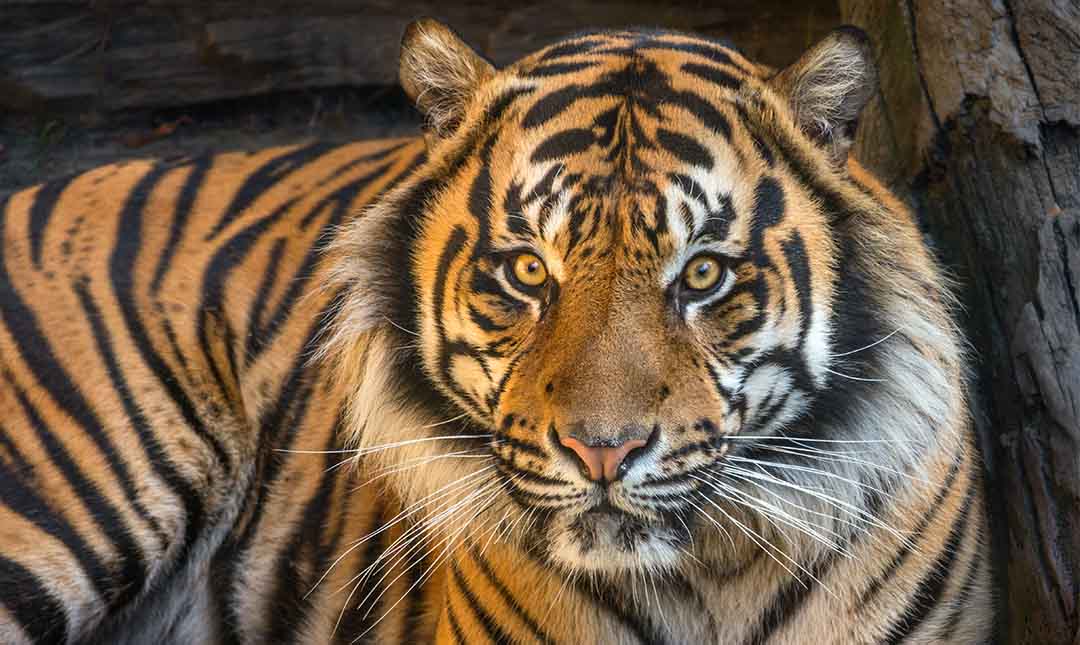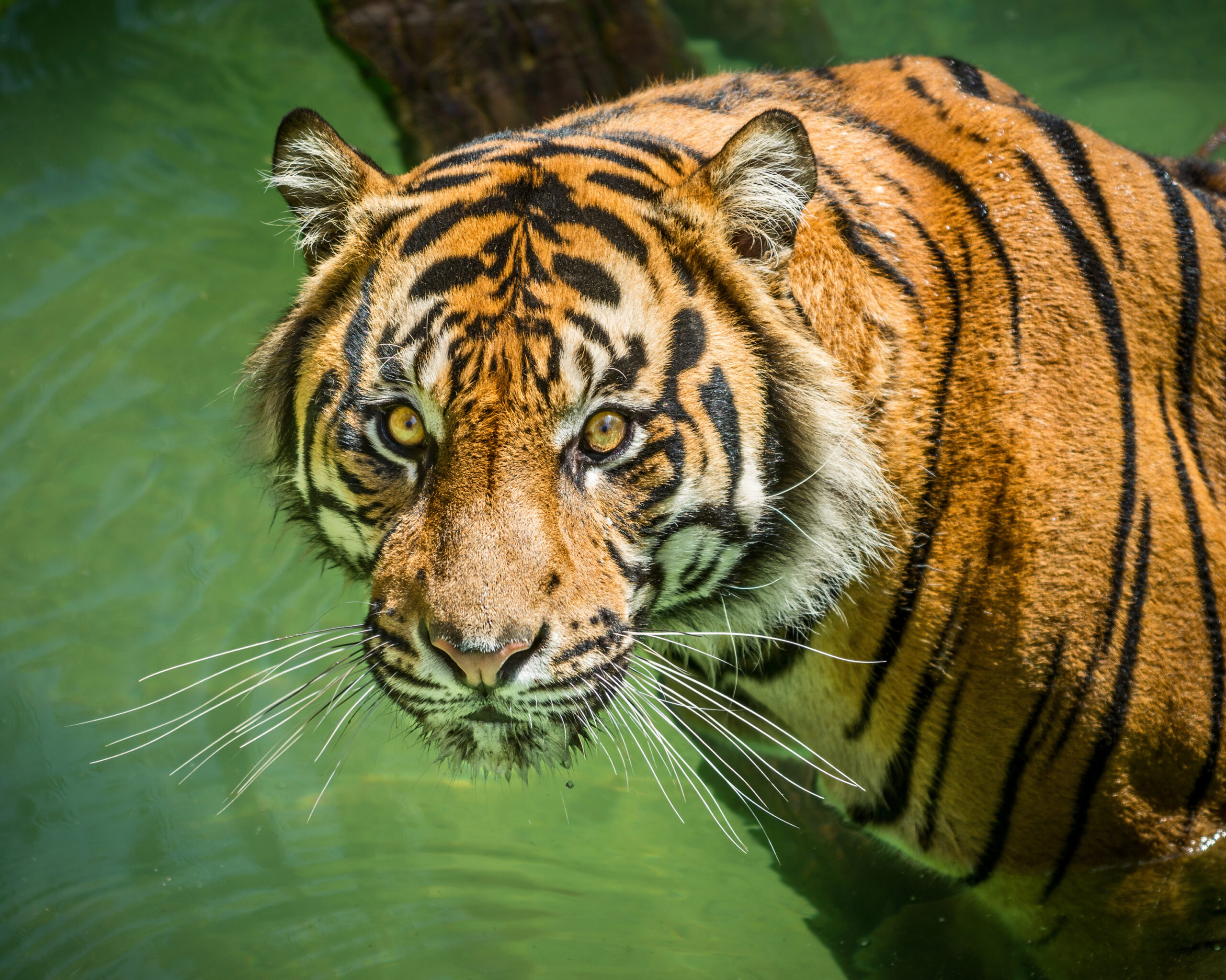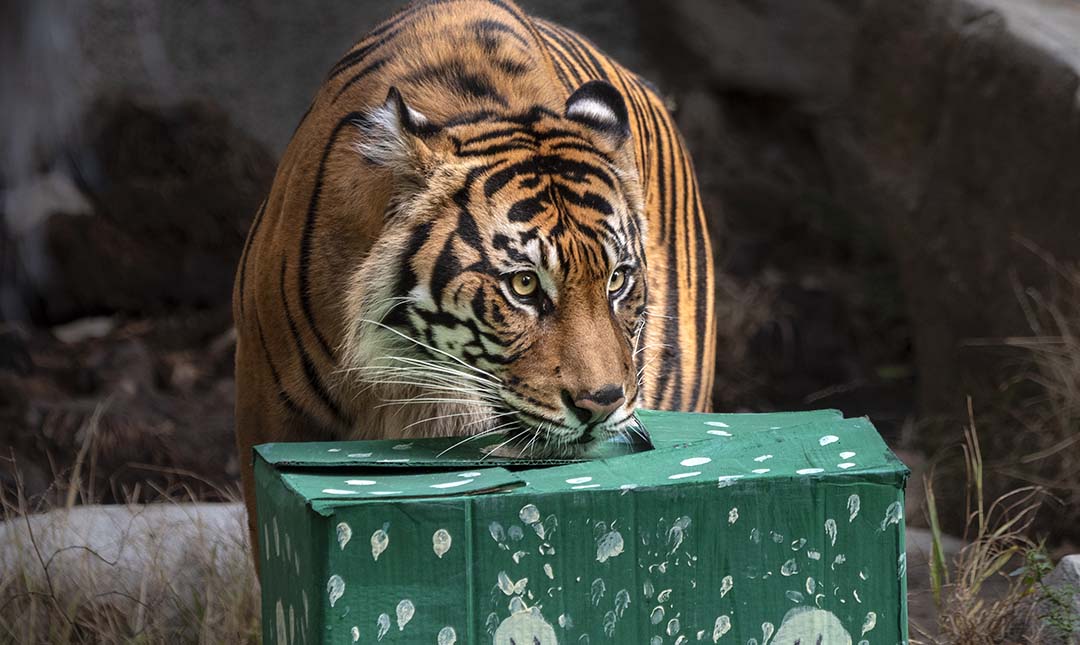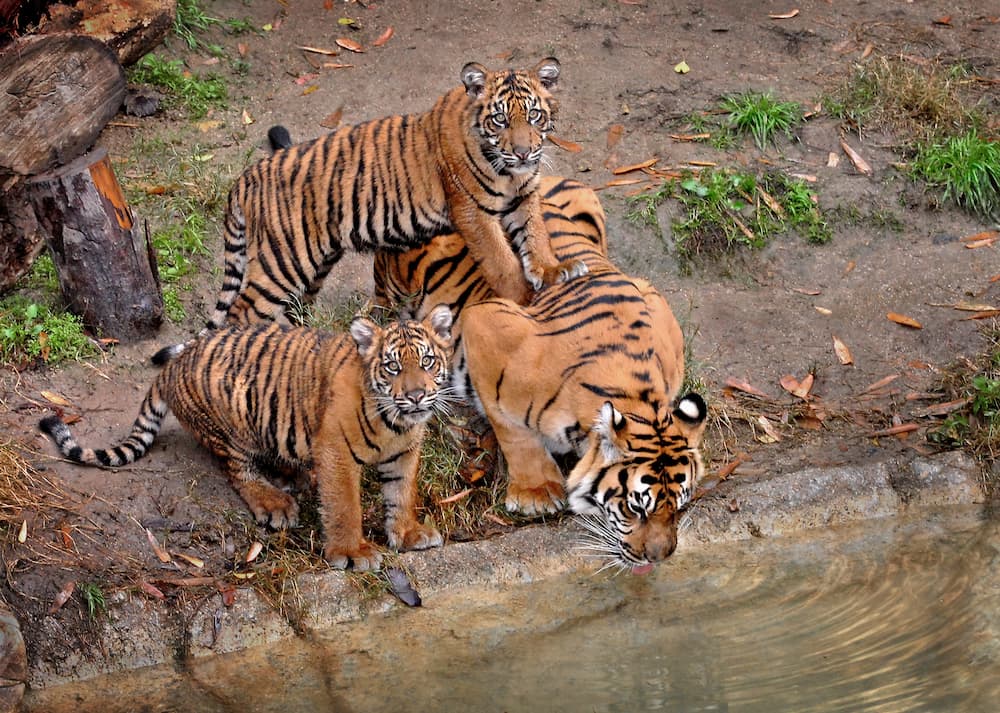About
Sumatran tigers are the smallest tiger subspecies, weighing in at 300 pounds or less as compared to their Amur cousins, which can reach 700 pounds. Like most cats, Sumatran tigers are solitary and live within a carefully guarded territory. They are ambush predators with night vision that is six times better than human vision. Hunting begins at dusk, and tigers may travel up to 18 miles to find prey; only one out of every ten or 20 attempts is successful. Tigers average one large kill each week. Tigers have webbing between their toes and are good swimmers, allowing them to pursue and catch prey in the water. After eating its fill, the tiger may hide the carcass and return for additional feeding over several days.
Tigers are the only big cats with stripes. Stripes, like spots, help provide camouflage in dense cover. Mating typically occurs in winter or spring, after which the mother will give birth to two to four cubs. She raises them alone, and they remain totally dependent on her for food until about 18 months of age. At about two years the cubs will become independent. They reach full maturity at about three and a half years for females and five years for males.
Found only in the forests on the island of Sumatra, Sumatran tiger populations have declined 60 percent or more since 1970. Fifty percent of the island’s forests have been cut down for rubber, acacia, and oil palm farming. Additionally, tigers are poached for body parts. Only 400-500 Sumatran tigers are estimated to remain in the wild.
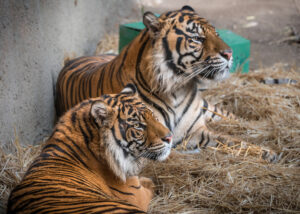

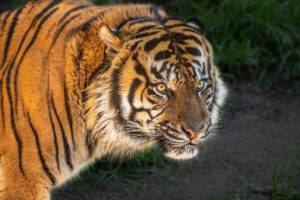


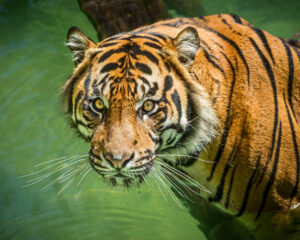



Status
Sumatran tigers are listed as Critically Endangered by the International Union for Conservation of Nature (IUCN). Continued agricultural habitat destruction, poaching, and killing of tigers that come into contact with villagers, all intensify the crises surrounding tigers.
Habitat
Found only on the Indonesian island of Sumatra, they live in forested areas with dense vegetation and reliable sources of water.
Diet
Carnivorous, they prefer small deer and wild pigs. They will also consume monkeys, birds, reptiles, fish, and domestic livestock.
Physical Characteristics
These tigers range in size from seven to eight feet in length and may weigh from 200 to 300 pounds. The male is slightly larger than the female with a more “bearded” appearance. Average life span is 15 years but they may reach about 20 years in human care.
LOCATION WITHIN THE ZOO
You’ll find this animal in the “Animals of Asia” section. See Zoo map.

